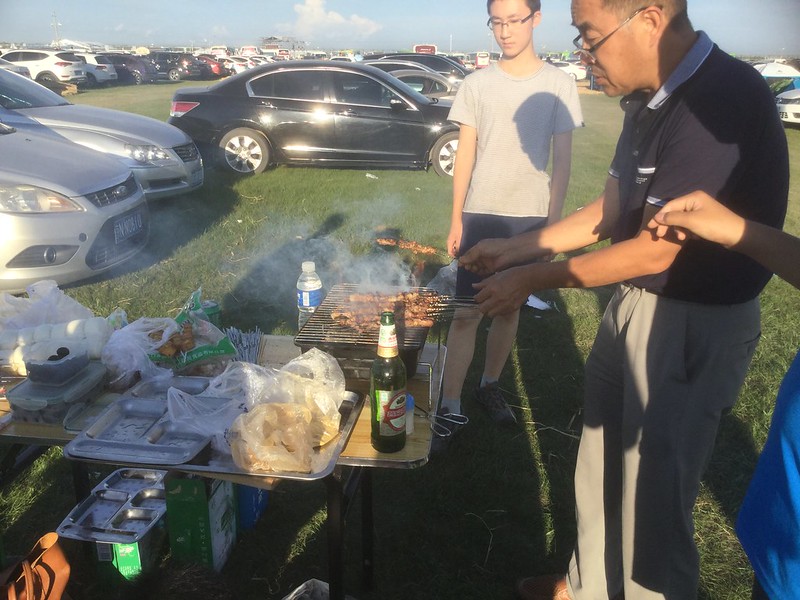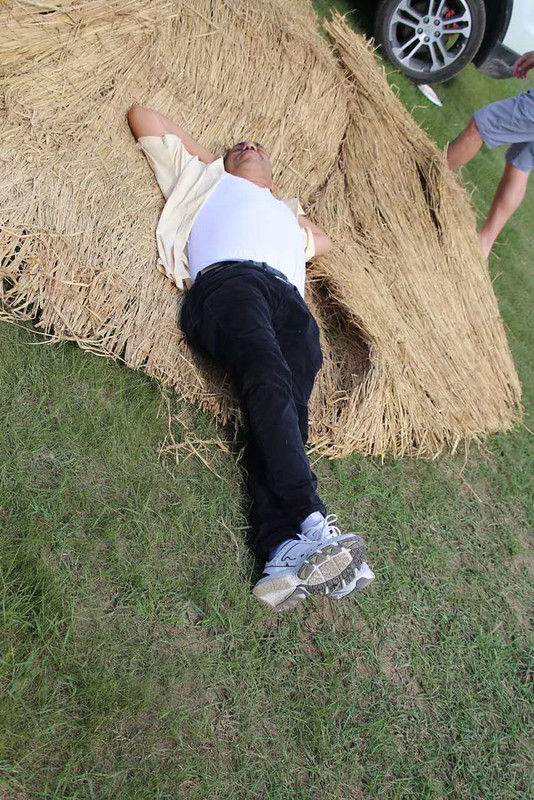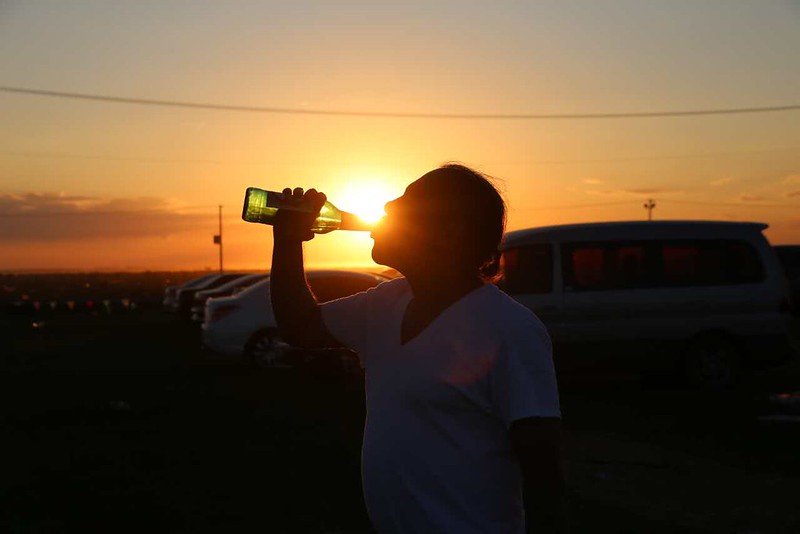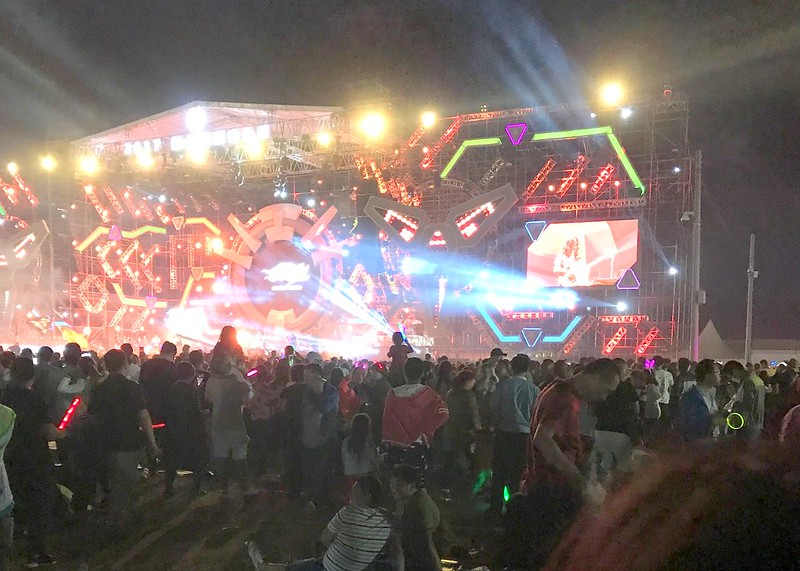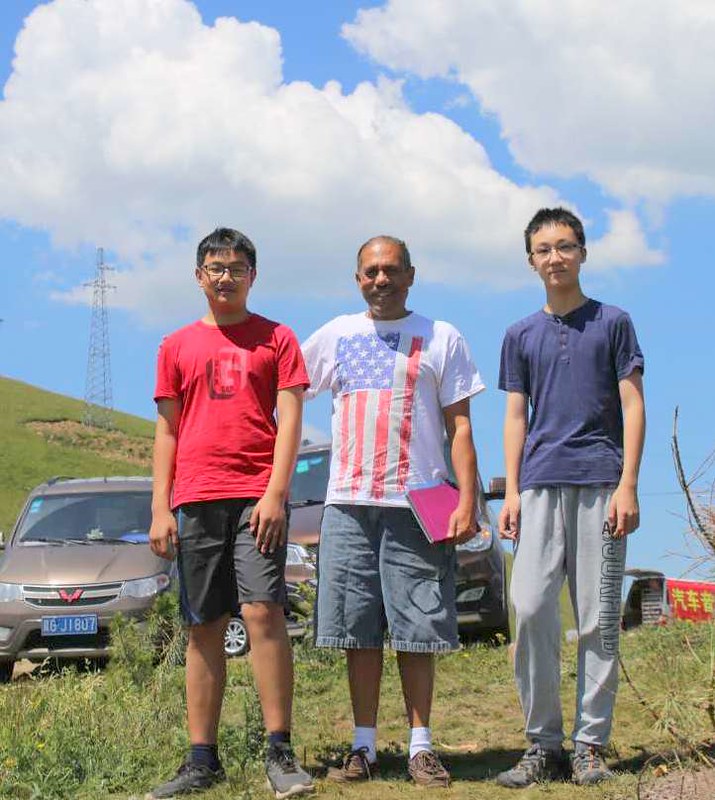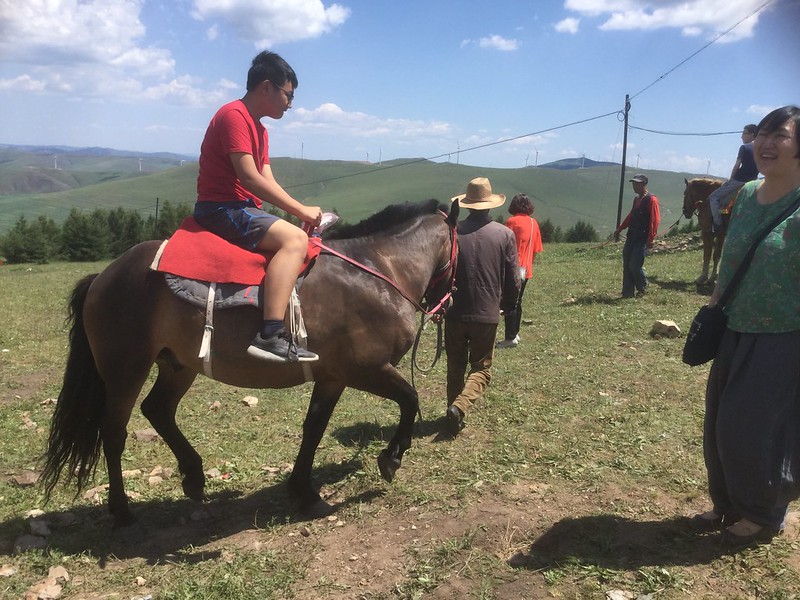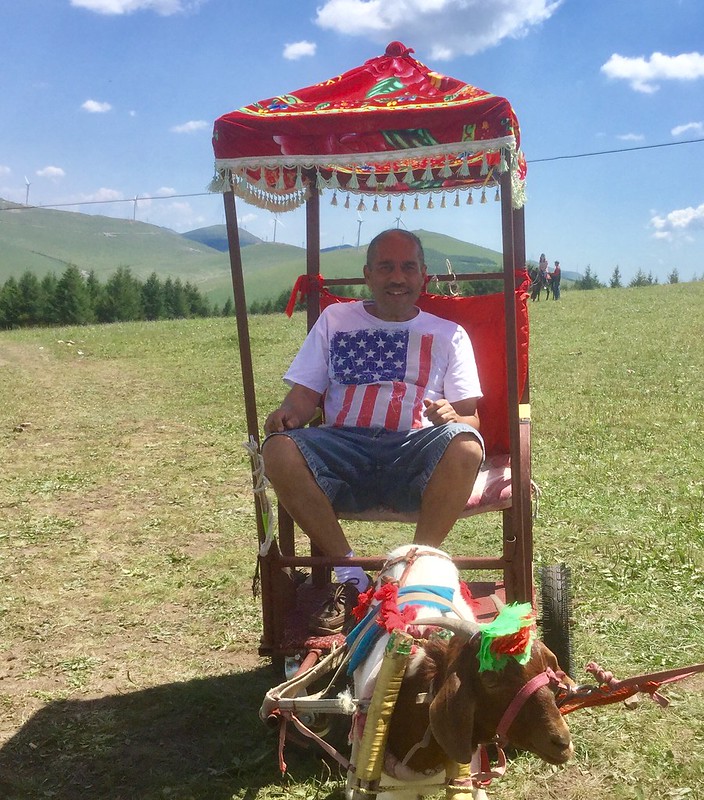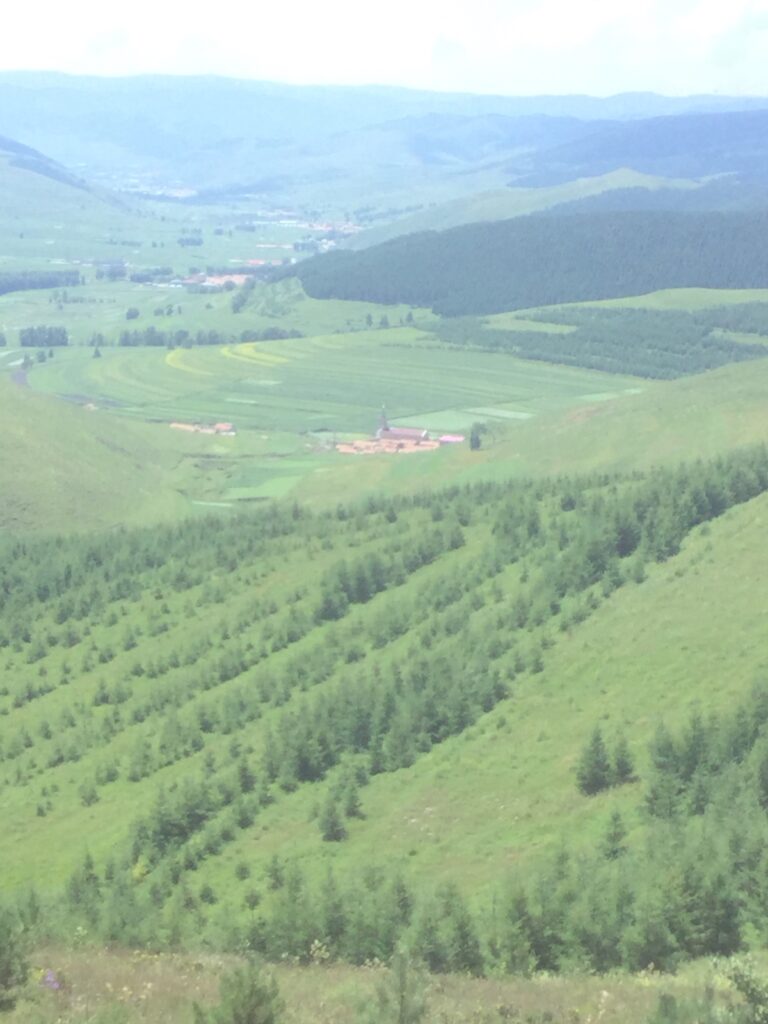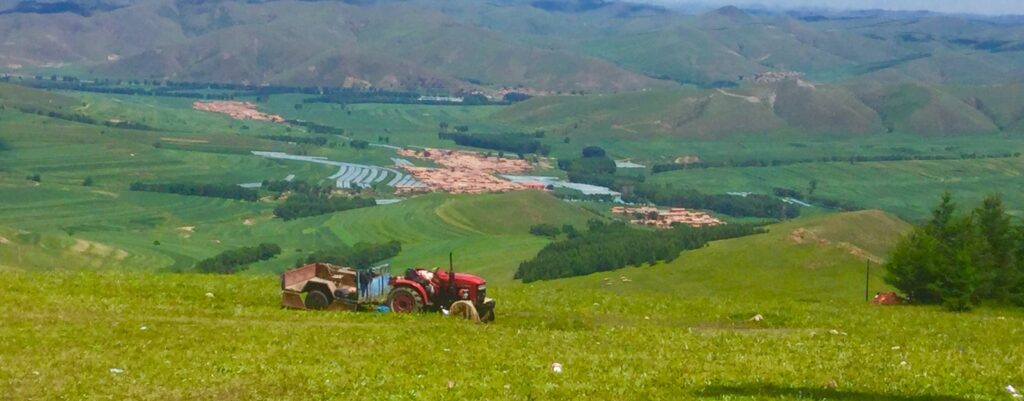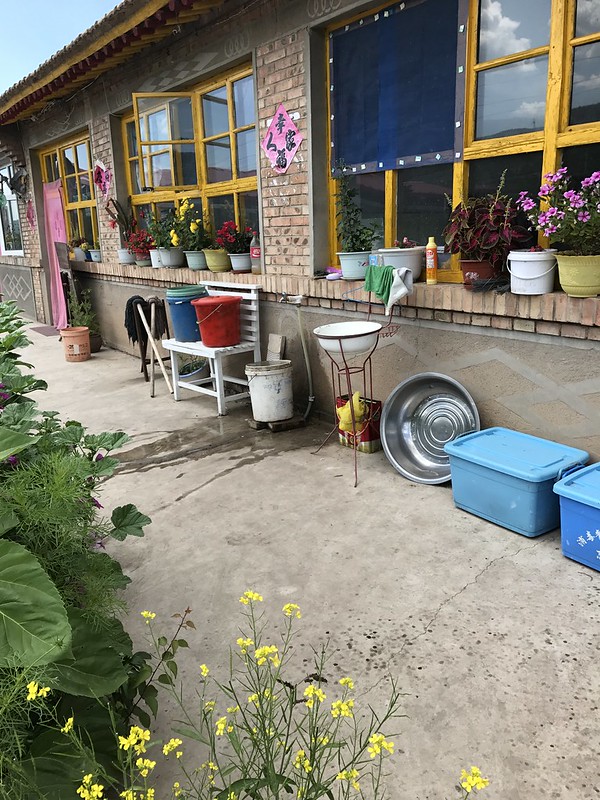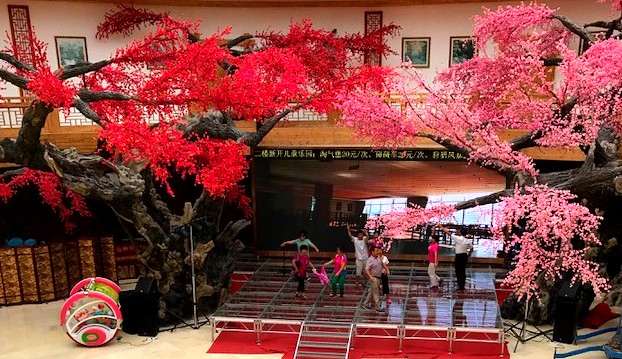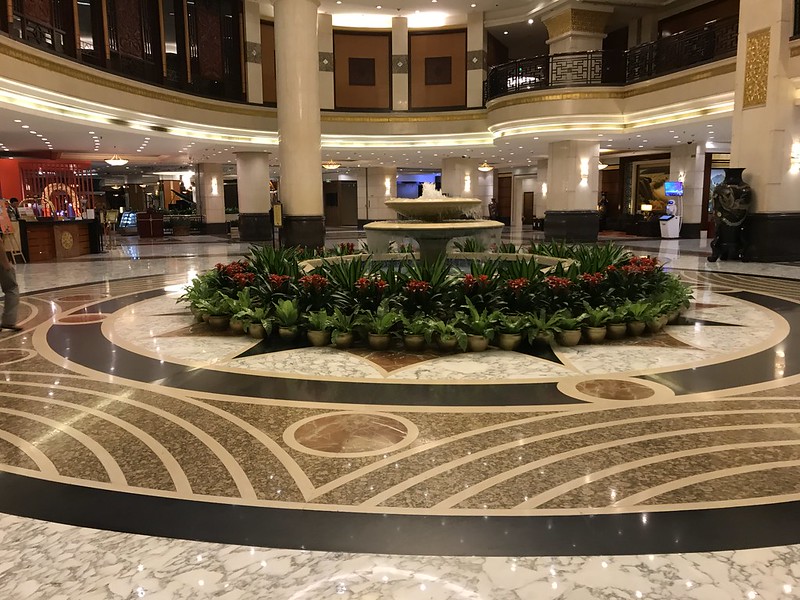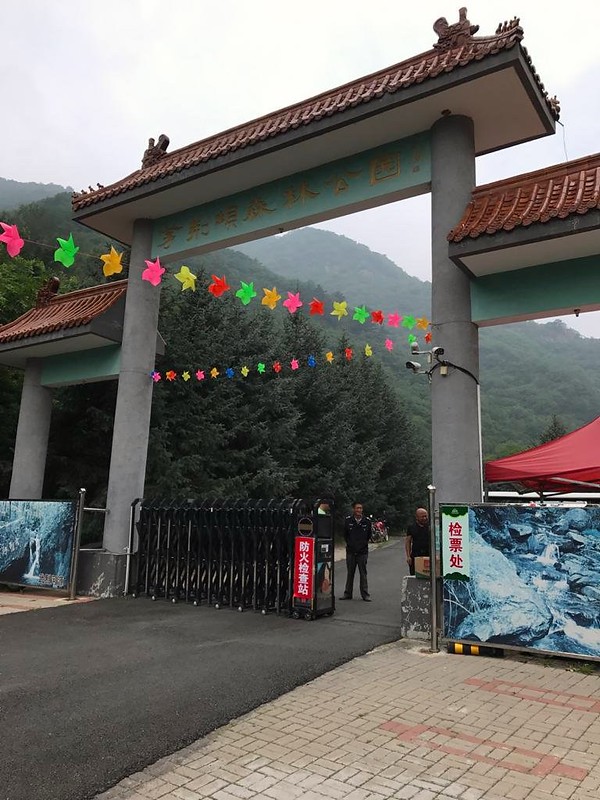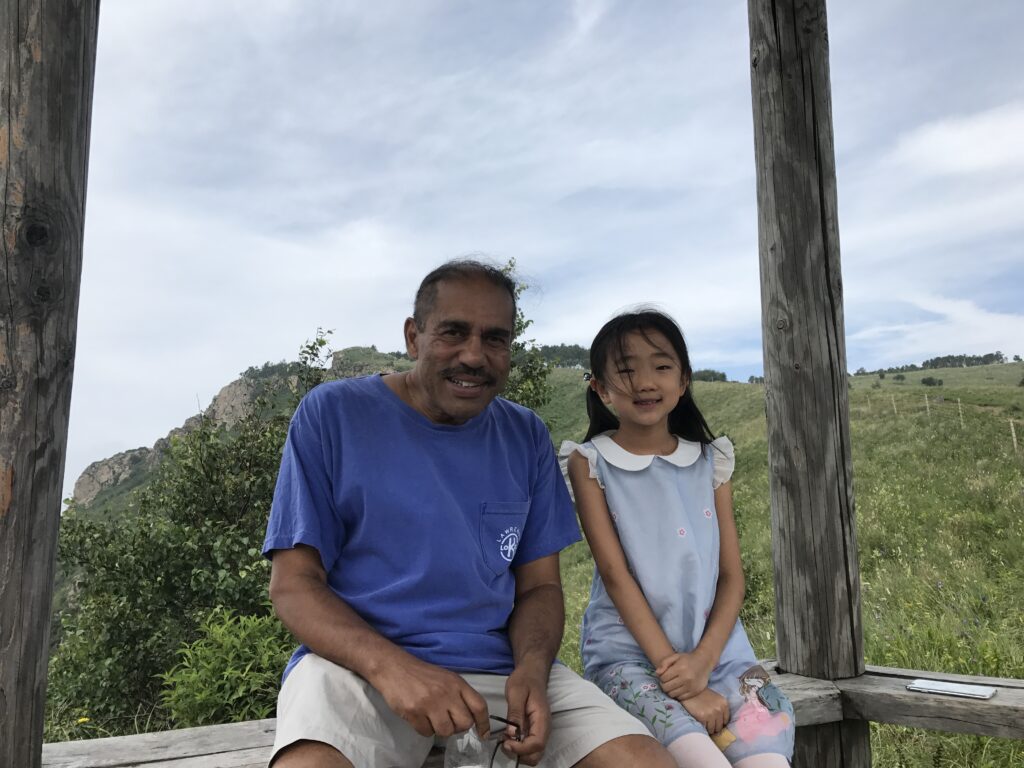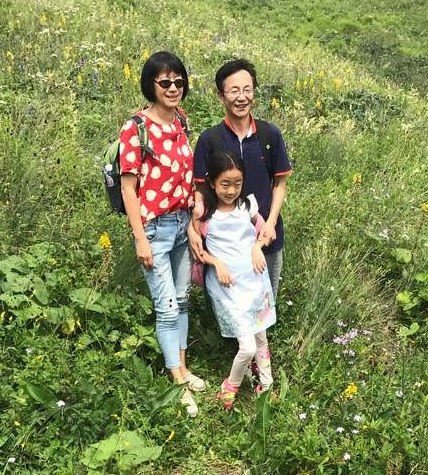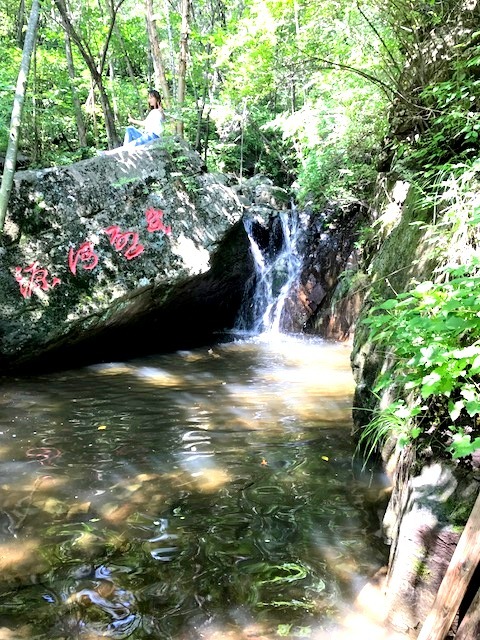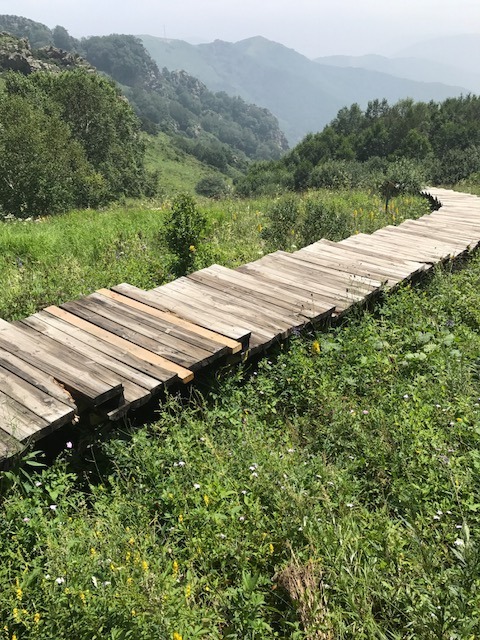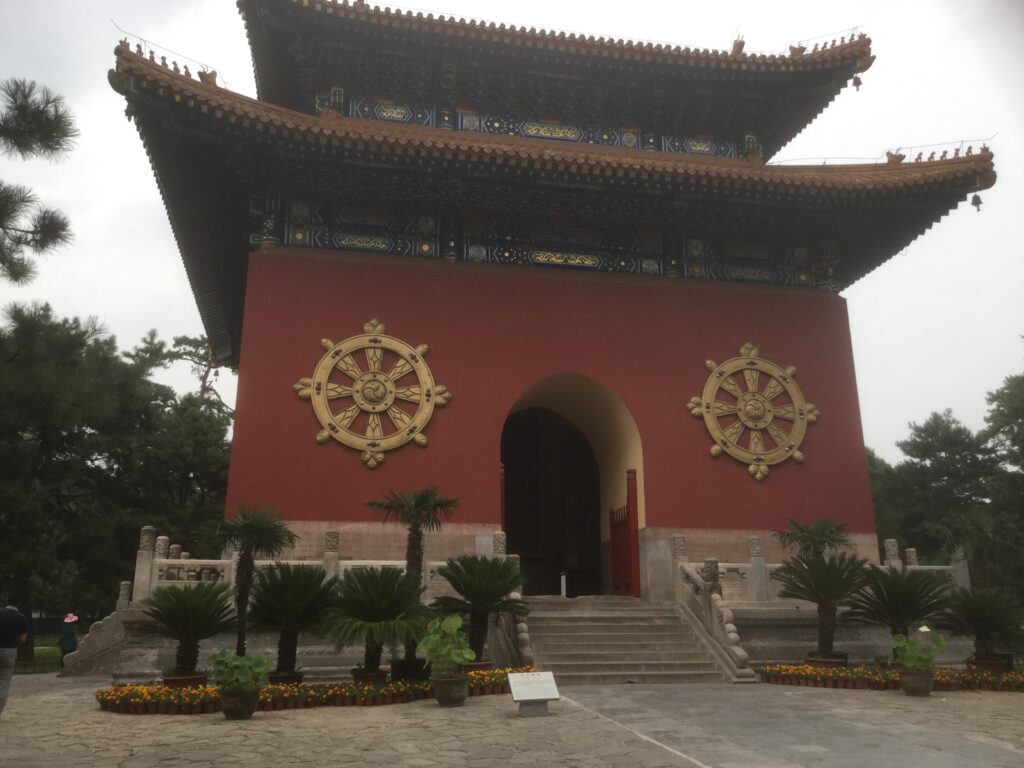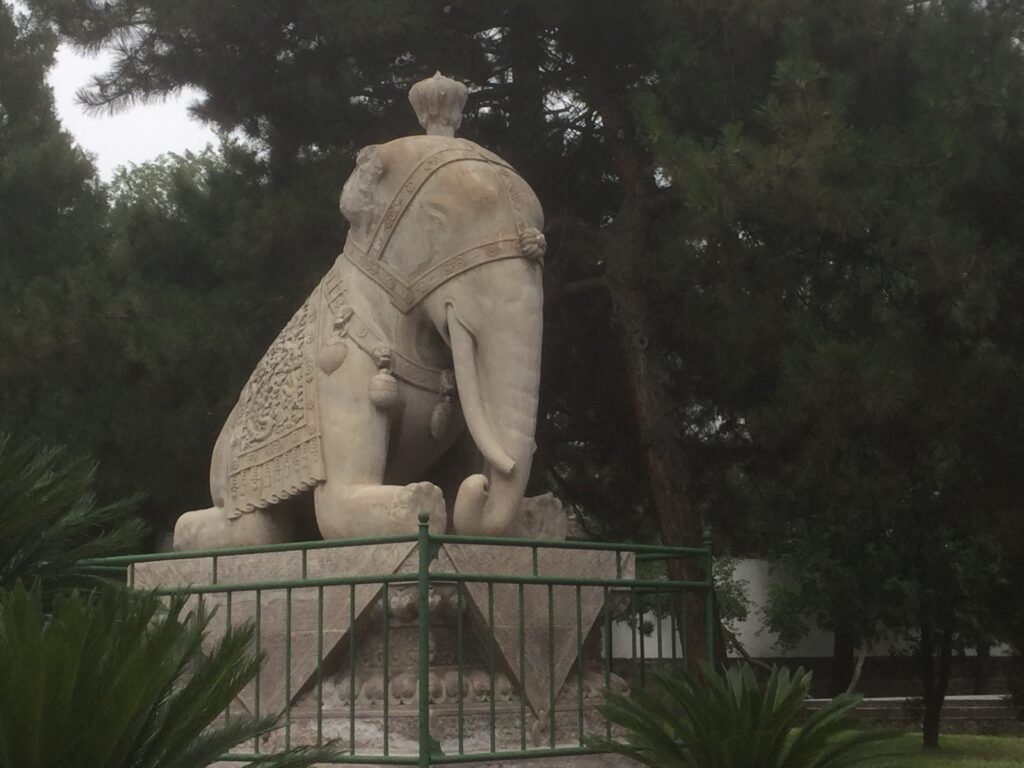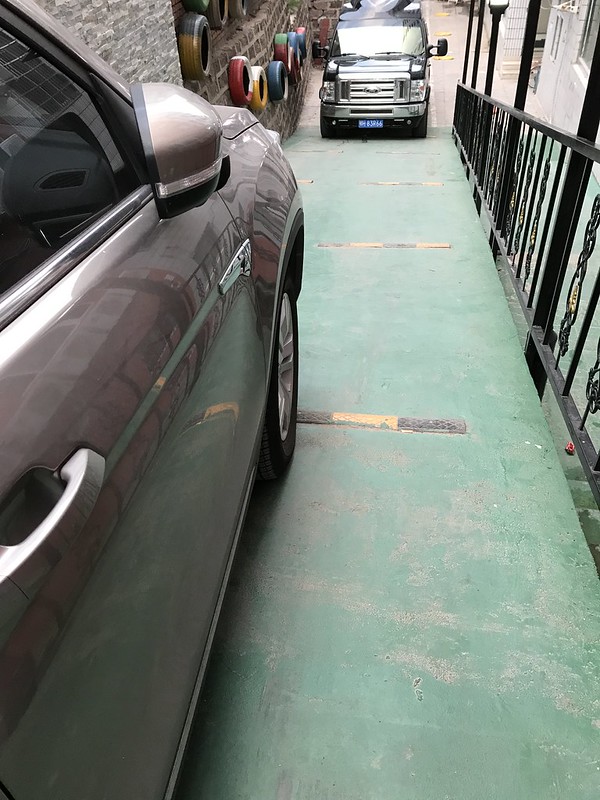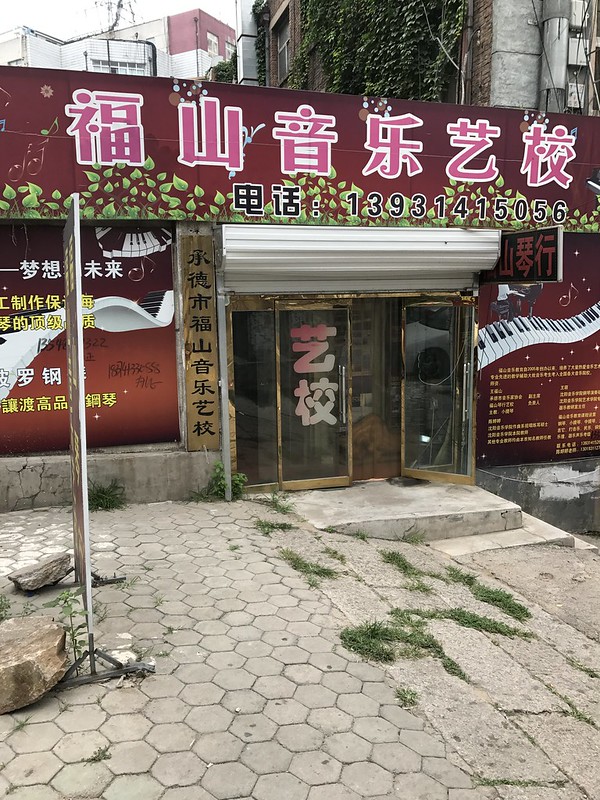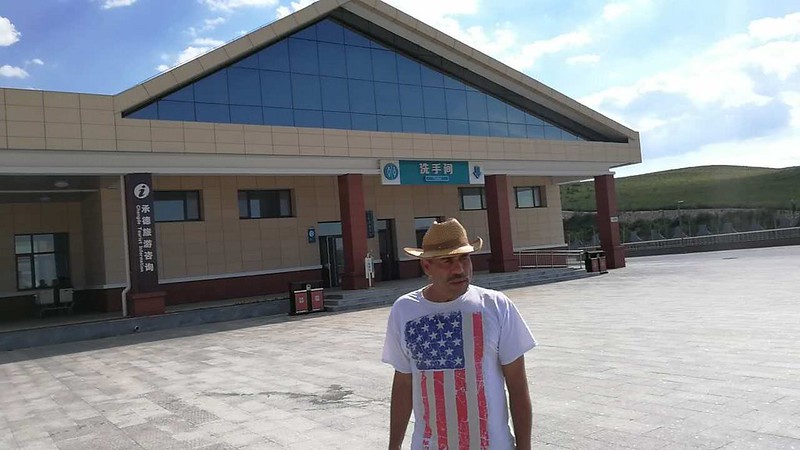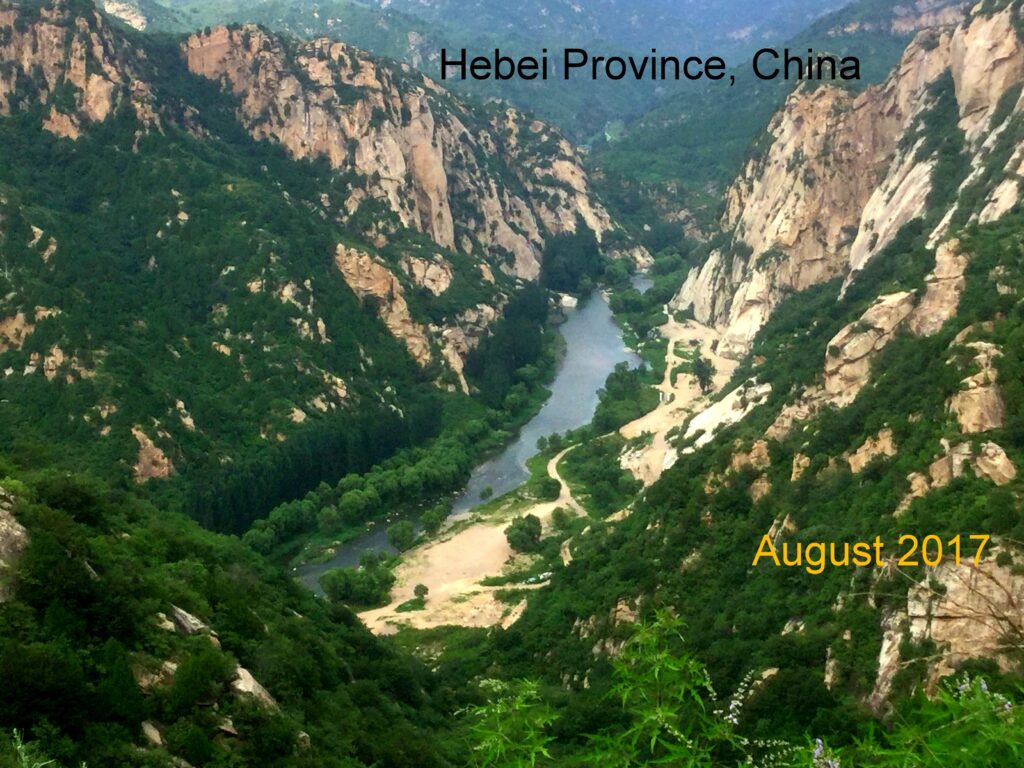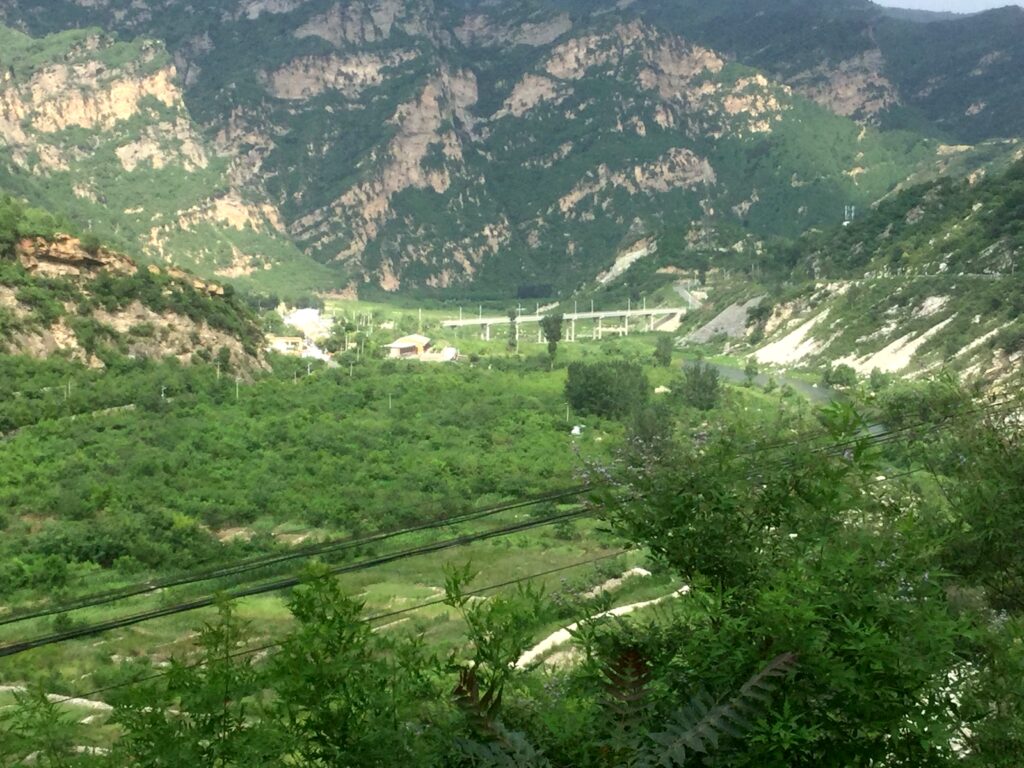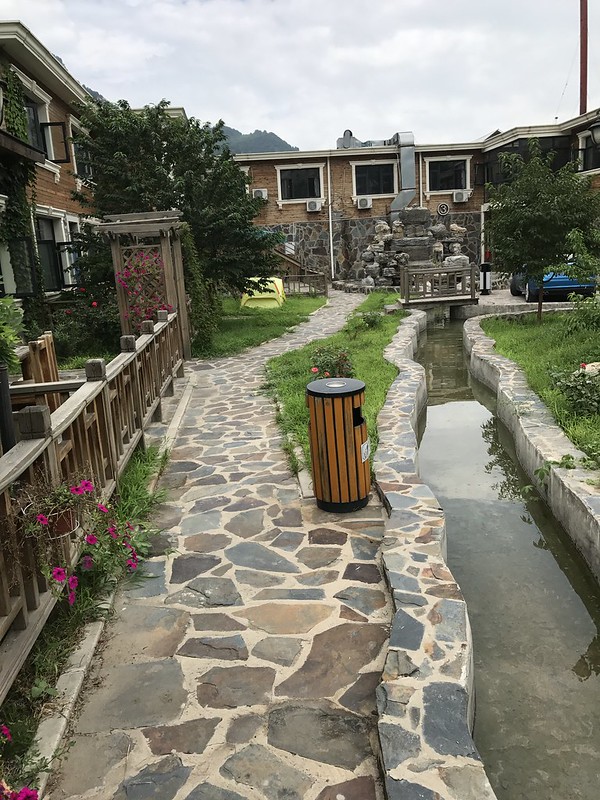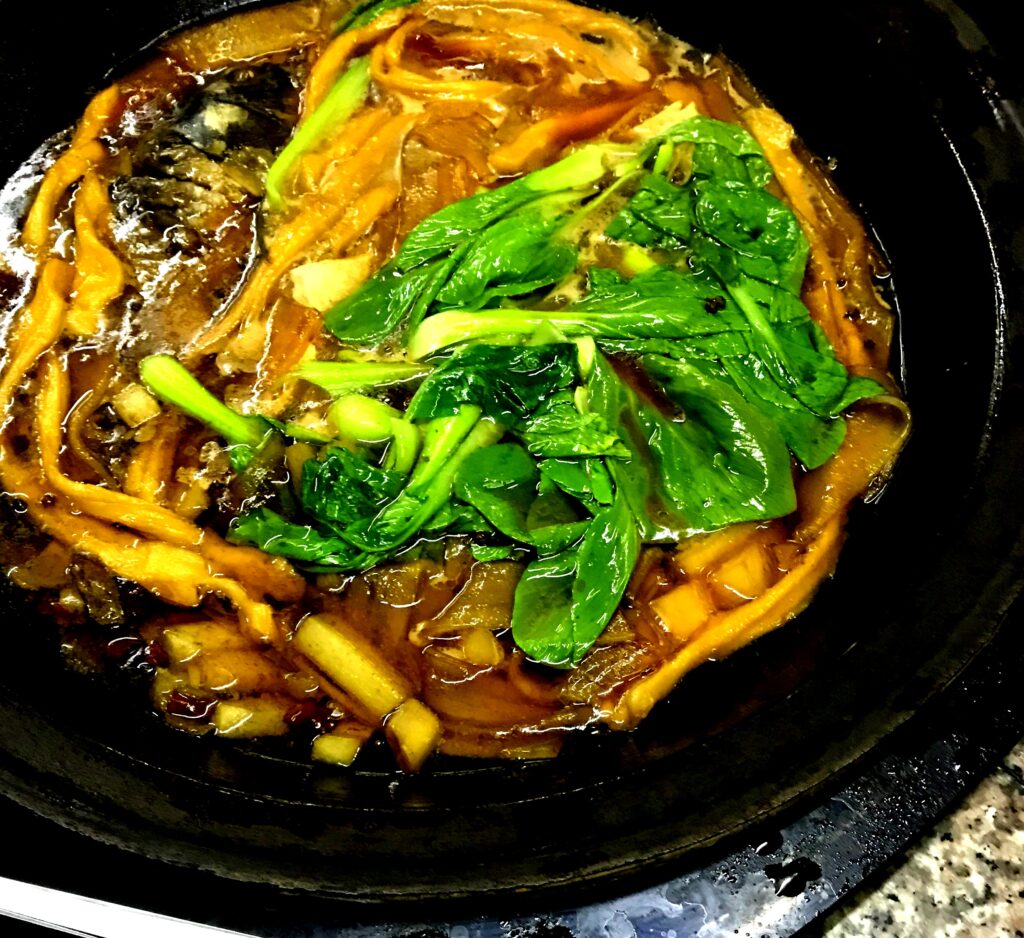I am rewrting my blogs on China a little differently for Nibedon magazine. Many thanks to Mr. Samar Mandal and Mr. Apurba Karmakar for suggestions and comments.
China has changed a lot. Like a giant that moves at a lightning speed. And changes its own self. Like a chameleon! It was always a giant. The chameleon thing started only about thirty years ago.
China is an ancient society. The common man has been oppressed here for the last two thousand years. The Chinese Royalty and the Aristocracy controlled the wealth, the means of production and tried very hard to convince the hungry masses that the only way to avoid death from starvation was to work hard to create more wealth for their masters. The elegant Chinese architecture, the culture, the arts and the literature were unknown and inaccessible to the poor.
This history is not much different from what happened in the West and in South Asia, but the Chinese did it with style. They had an elaborate system of government administrators and educators that went hand in hand to stifle the poor. The tax collectors were all over the country, the law enforcement ready to send people to jail for minor infractions. The educators made sure that education was not accessible to the poor – heck, the Chinese alphabet has 5000 characters and it takes about five years to be literate in Mandarin. After five years, you are in the first grade (class 1) in school! A farmer’s child will hardly have time to learn the alphabet, he would be better off to start work at the age of ten! Even basic literacy was a privilege for the rich! Shame!
Granted, the abovementioned history of China is naïve representation of a very complex set of events in a vast country, but the relentless poverty of the poor has been a self-sustaining fact for a millennium.
The First Big change – not very good for the people!:
The communist government that came into power in 1949 had some good intentions initially, but soon found that socialist policies do not work in a stodgy bureaucratic society. The government started lying about its achievements and torturing the populace as well, just as it happened in other communist countries.
A few important contributions of the Communist regimes came in very handy in the subsequent era of state capitalism. The socialist state of Mao could not figure out how to run a factory or a small store efficiently because of the all-pervasive bureaucracy, but it built schools and hospitals everywhere even in remote areas of China. From zero literacy of the poor till 1950, China achieved a high overall literacy rate as early as the 1970’s.
The government also forcefully liberated women. Women went to the same schools and worked the same jobs as men, and even wore the same clothes in Mao’s China! In fact sometimes everyone wore the same clothes, even the same color!
The Take-off
Liberalization and reforms happened in the late eighties –the history of that is complicated as well. By early nineties, the Chinese government, in association with the budding capitalists, had a brilliant business idea.
If you build factories in remote hinterlands of china, you will get unemployed laborers who barely survive in agriculture – they will be willing to work for about $5 a day (400 rupees). Then you can make simple consumer goods – pens, coffee cups, toys, spoons and forks, cheap clothes and shoes – for about half the cost of anywhere else in the world. The trick is to control quality, build infrastructure to support large manufacturing facilities, and raise productivity of workers.
The bulldozers and the heavy construction equipment of the government went to work . Massive factories were built in hitherto unknown cities which were close to supply sources of minerals, fuel and water. Train tracks and highways were built fast, blazing all the land and small villages that were in the way, blasting through mountains and building bridges over rivers. Thanks to Mao’s regime, even the abject poor in villages were literate, so they can be gainfully employed in factories. In a few short years, the Chinese were selling everything for consumers in every country of the world, from hairpin for your hair to the belt for your waist and shoelaces for your shoes!
This was so darn successful that it led to other huge projects as the capitalists became bolder and a solid middle class was created in a few short years with a much more sophisticated labor force. The economy took off, major projects were undertaken to transform old cities and build new ones, all with the brute force of an all powerful government. The Chinese economy , single handed, caused factories to shut down all over USA and Western Europe and elsewhere!
Fast forward to 2017 when I visited China. By now, the factories have exhausted the excess supply of labor from the remote villages. Minimum wage for factory jobs is more like $4 (300 rupees) an hour, still low by Western standards but a major improvement for the standard of living for the common laborers (from 500 rupees a day to 2400 rupees per day!). China now outsources many products to Cambodia, Bangladesh, Indonesia etc. where wages are lower. The Chinese are now into the production of more sophisticated products like electronics, cars, phones and computers. The higher educational sector has expanded many times over, with spanking new universities and joint ventures with famous American and European institutions. The average salary for a young college professor was about $500 a month in the early nineties, now about $5000 per month ( $3500 after taxes- about 2.6 lakhs- –taxes are high in China!). You can live lavishly with a family in China with that salary – no bribes need to be taken, no secondhand payments have to be negotiated!
More Change: Social engineering
The Changes did not stop there!The last thirty years have been a scenario of one drastic change after another, affecting every part of China’s society. The Juggernaut of a government , in cahoots with the capitalists, decides what new policies need to be implemented. A whole new set of policies are then forced upon the citizenry, violating their human and civil rights. Any dissent is summarily disposed of.
The goal in China is to enrich the government coffers and bloat the capitalists’ profits. There is also probably a futuristic goal of attaining global hegemony and becoming the world’s leading superpower. The people are shoved under the bus if they object to any of this massive social engineering, but their standard of living has improved drastically over the last twenty years as a consequence of this.
Communist China was a land of bicycles and and narrow streets in cities. Now it is a land where most people own cars.
On the morning of my second day in China, my colleague from Kansas, Dr. Jin , decided we will meet with about six people , families of Economics and finance professors, and we will do exciting things outside of Beijing. There was some confusion in the morning about the meeting, we drove around for a while trying to locate each other. I was looking for traditional Chinese neighborhoods in Beijing but did not see any, Then it hit me: the Chinese neighborhoods that we saw in books and pictures 30 years ago , are all gone. Jin confirmed this, Take a look below at a typical Chinese boulevard:
The following is a sideways view of one street. The top side is the right side. Please note that in China, driving is on the right side of the street. The bottom part is the left side .
Please read the following like this: At the extreme right, there are multi-storied skyscrapers. On the left of the skyscrapers , there is a pedestrian walkway. To its left there is a divider with grass and flowers. To its left, there is a bicycle path , and so on! – you get the idea!!
Multi-storied skyscrapers
_________________________________________________________________________________
Pedestrian walkway (footpath)
Median ( grass and flowers)
Bicycle path
Median (divider )
Feeder road for cars that exit the main road
Median –this one has large trees usually
← Main road for traffic going one way ←
Median
_____________________________________________________________________________
→ Main road for traffic going the other way →
Median
Feeder road
Median
Bicycle path
Median
Pedestrian Walkway
Multi-storied skyscrapers
All the shops are at the bottom floors of the sky scrapers, sometimes there is a strip mall next to the feeder road.
You may have seen 50 to 100 meter wide roads like this in a few planned cities in India or in the West. In Beijing, almost ALL the roads are like this! There are no side streets, no poor neighborhoods, no narrow streets, no small old houses, no congested areas, no slums! Over the last twenty years, bulldozers came into old Chinese neighborhoods with their lanes and by-lanes, congested main roads, small older houses and random shopping corners. They razed and destroyed them all and the streets like in the previous page were built, along with large city parks, playgrounds, canals and small lakes in EVERY neighborhood!! Only a few old neighborhoods are preserved as “old Beijing” for people to visit and reminisce.
What about the people that were evicted? They were allocated apartments in the newly built skyscrapers , sometimes with an additional monetary compensation. Did they agree to be moved? Were they happy with the relocation? The Big Government did not care! The new city of Beijing has a lot less old time charm than the old one. To compensate for this, the government built fountains , statues and gardens and impressive light displays on the new roads and on the skyscrapers. The old factory worker who would look at dirty laundry hanging from the neighbor’s balcony in front of his old dilapidated home , can now look at this massive illumination over a park in front of his apartment on the 20th floor. Is he happier there? You tell me!
From Beijing, we drove to the other side of Heibei province to a really mountainous place and stayed in a resort there for our last two nights. We drove for many hours on what appeared to be brand new super highways. Jin told me that a lot of these highways have been built during the last two or three years, thousands of kilometres of highways all over China. The quality is absolute top-notch, actually better than many US highways some of whom are currently crumbling. I could see new ones being built as we drove along. The word “massive”, that I have been using frequently here, is actually appropriate for the Chinese construction machinery. The cranes, the bridge-building machines and the bulldozers are all multiple times bigger than what I have seen in USA. Even the rest areas are just like in the Western countries, the old style stores and restaurants are not allowed on these new highways.
And of course, the tunnels! Building tunnels is expensive, so in most countries , tunnels are built for strategic reasons like going through a mountain when going around it will involve dangerous driving or when going around is not possible because of gorges and lakes around the mountains. The Chinese government has built tunnels like crazy on these modern highways, apparently without any regard to the high costs. Jin and I counted nineteen tunnels on a roadway stretching about 300 km. Some were small (200 m), some not so small, and there was a monster tunnel stretching for six kilometres under the rocks. Obviously, they had spent a massive amount of money doing this, but this road connected Beijing to a mountainous area of Hebei province which is sparsely populated.
As a result, nice resorts have been built in the mountains. We stayed in one of them for two nights. Now that people from Beijing can drive to here in about three to four hours (as opposed to twelve hours on treacherous roads before), this has become a popular weekend destination. Since we were there in the middle of the week, it was not crowded at all.
We drove around and enjoyed the scenery. Even now,this place is sparsely populated.
Lifestyle Changes over the last Fifty years
I went to America way back in 1975. There were lots of Chinese people then and Chinese restaurants were common. I had Chinese students when I started to teach, and Chinese colleagues and other Chinese friends and acquaintances. But, until early nineties, practically none of them were from mainland China. Sure, there were children and grand children of migrants who came to USA before 1939, but the rest of the Chinese were migrants from Taiwan, Hong Kong , Singapore or somewhere else.
The Red Chinese were mostly locked in their own country for about thirty-five years, apart from a small number of occasional defectors.
Apart from a small number of members at the top echelon of the Communist Party, most people lived about the same life. Some had more power, some had more responsibility, but no one was even remotely close to being well-off in the western sense. My friend, Dr. Jin, left mainland china in the mid 1980’s and finished his Ph.D. in economics from a prestigious American University. He started working in the University of Kansas as my colleague in the early nineties. He grew up in a village close to Beijing, right around the time of Cultural Revolution and the Red Guards. He told me that everyone in the village worked in the same factory (actually a collective farm), both men and women wore the same clothes and shoes, and ate the same food in the village cafeteria, every freaking day!! Women never dressed up, never styled their hair, never put on any make-up – all these cosmetic products were not available to the public. The Red Guards had confiscated all cooking utensils from all houses. They were melted into steel ingots, and Mao’s government proudly showed the ingots to the outside world as proof of rural industrialization!! While Marxists in India and elsewhere admired this (fake) rural steel mills, Jin’s mother had hidden away just one frying pan from the communist party members. On special occasions, she will light a fire and cook. Her children stood sentry outside the house in case the Red guards see the smoke from the fire and suspect furtive cooking activities in the farmhouse. Mostly, jin’s family stopped growing most vegetables in their garden because they had to be eaten raw.
Ballet, theater, and dancing were immensely popular classes with the schoolgirls because on the day of the performance, they will get to dress up and wear make-up!!
Let’s do a digression on the status of women and family in China. The Communist regime adopted a one child policy, it has been in place for about 50 years now. Even before that the communist government sent women to work, same as men. They were even asked to wear the same clothes as men, the infamous Mao tunic. As a result, several generations of women became educated and independent ,erasing the earlier stereotype of women as homemakers. Today, every woman child of a one-child household competes evenly with men for jobs, prestige, and power. Family and husband are low priorities in their lives.
The communists forced out gender discrimination but bought forth a somewhat androgynous society for a couple of generations. These women, growing up, had no access to make up, hair care products or nice clothes or shoes or beauty parlors. I mean, not poor women, but ALL women, about 500 million of them! Being feminine was deemed as sexualization and it reeked of Western debauchery! Dr. Jin dated his would be wife from high school, they got married after six years of dating. He would tell his daughters , who were born in USA, about the only time he saw his wife in a nice dress with make up and styled hair and high heels was on his wedding day. Even after coming to USA, Ms. Yang, his wife, never dressed up, she really had no fashion sense. She would come to all our faculty parties wearing jeans and an over-sized shirt just like her husband.
Continuing on this theme, my new economist friends, two young women professors of Economics that I met in China, turned out to be well-educated, articulate and friendly. They were in the prime of their lives, with a Ph.D. in hand and very good jobs. Yet, they both complained, half-jokingly, about how difficult it is to get a nice Chinese husband. They both appeared to have no regard for fashionable or feminine clothing.
However, I am happy to report that this androgenic behavior is also changing fast. The last batch of Chinese Ph.D. students in Kansas around 2014 when I left ( those women would be about ten years younger than the women above) were more”American” in appearance, and more confident and better-dressed. And by 2011 or so, a new generation of rich Chinese kids had started infiltrating USA campuses, not as Ph.D. students on scholarship, but as undergraduates paying big money from their dads. These kids have fantastic knowledge of English and most of the young women are absolute eye candies, and dressed like it too!
Lifestyles during the last five years
Now, there is a strong middle class in China, apart from the rich and the super-rich. They live an affluent life style compared to the Indian middle class with cars, nice housing, free education (for one child, now two are allowed), free medical care and decent pensions. New things are always becoming stylish.
On my second day in Beijing, we met two families of economics and finance professors – four professors and two teenage kids. We traveled with Jin , myself and two teenagers in one car, and the four parents traveled in a separate SUV. These people were going to experience something brand new.
Like what? They said they are going to Barbecue on the Chinese prairie and then go to a rock concert! All this seemed like a novelty item for them! We drove through some flat grassland out of Beijing and parked our car in a very large field with about two hundred cars. They were all Barbecuing, American style (with Chinese spices and condiments). The professors, all of whom spoke decent English, told me that for the Chinese who hardly owned cars fifteen years ago, just to see a couple hundred parked cars and the middle class families doing barbecue like they have seen on TV in the USA, is like a freaking fantasy come true. China is changing fast, they told me. Compared to what their fathers lived like, their standard of living has gone through the roof! The two teenager boys spoke excellent English, better than their parents. Parents, specially moms, really doted on their single children. One of the teenagers had his own drone – a real one! He flew it while we were there, drawing some serious envious looks from the spectators.
The rock concert happened in a field right next to this place. The music scene in China is totally different from other Asian countries. Because of censorship of Western media and restrictions on social media, the Chinese youth did not have much access to Hard Rock, Techno, Hiphop or Rap Music. Only pop music was allowed by the government. So it was like an underground scene where people downloaded music secretly and clandestine clubs that played them behind closed doors. On the other hand, Chinese rock has always been tightly controlled by the government – any lyrics related to social injustice or social reform or drug use or explicit sexuality are not allowed since 1990’s – so it is pretty bland.
None of the four professors I met were personally interested in Rock or Hiphop – not at all! In any case we all walked over to the concert in the evening. There were several security checks, I heard people calling me “Laowai” – a slang for foreigner! I have been to only a few rock concerts in USA- there is a lot of energy among the audience as well as blatant sexuality and rampant drug use over there. Here, there was none of that, the women were wearing regular shorts and t-shirts, nothing remotely provocative by Western standards. The stage was impressive though as well as the sound system! The lyrics were in Mandarin.
Villages
Chinese villages are also changing fast. Since China is a vast country, with all kinds of topography and weather, different strategies have been adopted for different places. For some villages, I heard that the government built roads blasting several tunnels through mountains so now it takes two hours to commute to a city rather than one whole day through steep mountain roads, For some , new irrigation projects and new crops that the farmers never heard of before. The government even has a project to transform part of the Gobi desert into a green valley. I am not well informed on exactly what is happening in villages in this huge country, but around Beijing and nearby Hebei province, villages appear to be deserted. The old farmhouses, built with handmade bricks, are still around, but most of them are empty. My guess is that most of the residents have been relocated to towns with large manufacturing facilities, and only a few people are left in the villages to actually farm the land with modern equipment. There was a feeling of abandonment when we drove through the empty villages with crumbling red brick houses.
The Government
The government still belongs to one party and is immensely powerful. In India, only some government offices are grandiose, many are just ordinary buildings. Same in USA. In China, most government offices look like mansions, even in smaller cities. I heard that there is an unwritten code that no private citizen can build his residence which is taller than the largest government office in town – I am unable to verify this.
The government shows off its power and affluence.
On my arrival in Beijing, Dr J picked me up at the airport and took me to a hotel that was part of the Olympic village (during the Beijing Olympics). The hotel was OK, but the location was next to a beautiful lake next to a mountain. I had my first of many delicious meals in China in a standard roadside restaurant. It was Chinese hot pot, with beef pork and veggies, to be cooked by the customers at the table. They put a simmering fire pot in the middle of the table and a pot of spiced broth on fire, we put thinly sliced meat and veggies in the broth, they get cooked in a few minutes, and we eat them with noodles or rice. I had this before in America in Deluxe Chinese places, but in China, it is very common.
Came back to our hotel, relaxed by the lake for a while and in the evening I got my first taste of Chinese affluence. The entire mountain across from the lake, about one kilometer wide, was lit up with beautiful illumination.
I asked Jin if there is a festival going on.
No, he said the lighting is provided by the government for the hotel guests to enjoy.!
There is absolutely nothing on the mountains except trees, it is not a town that is being lit up, just some empty space! All for the enjoyment for a few hotel guests!
This being my first day in China, I was a little confused about what to make of this. Later I saw many other examples of conspicuous extravagance by the government and understood the implications – it is BIG government showing off to the puny citizens its affluence and its power! – The message is somewhat sinister, indeed!
There is hardly any direct criticism of any government policy- the internet is restricted, music and culture are monitored carefully by the government. Serious religious activities are persecuted both directly and indirectly, as the Uighurs, the Tibetans and other minorities have experienced time and again.
The society is based on merit. Children successful at school are forced to study hard for many years and then forced to work hard for many years, before they become independently wealthy. The bottom twenty percent of the high school graduating classes are summarily cut off from further academic pursuit – they can never go to college. They are sent to vocational schools or asked to work as unskilled labor.
The noveau rich have their own ways to bypass the government, They send their kids abroad for study , they buy mansions abroad, they send pregnant women to give birth in USA so the babies become US citizens. The majority of the rest of the people live in a seriously oppressed society, albeit with a high standard of living that was unheard of even thirty years ago. Only time will tell if this system will endure for long!

